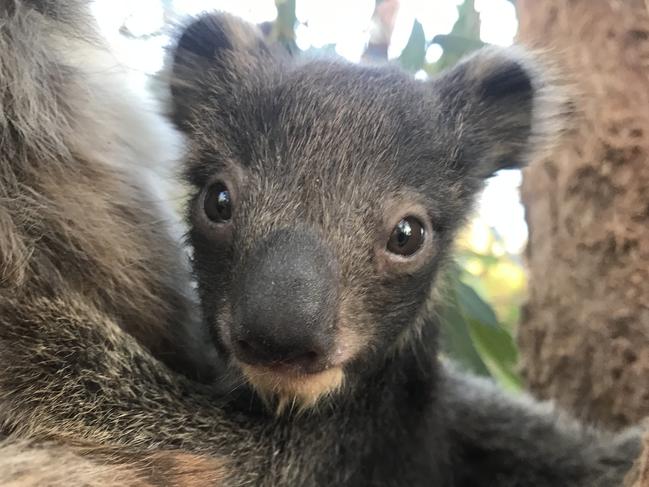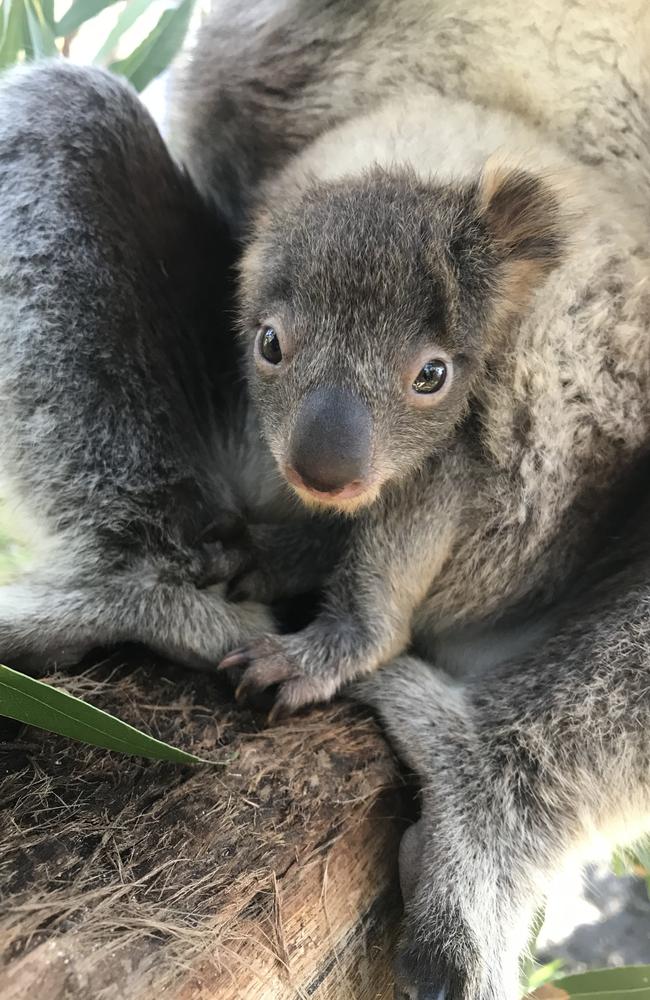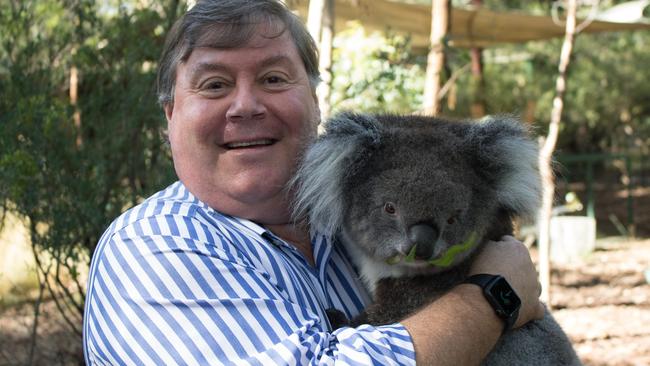International Koala Centre of Excellence at Cleland Wildlife Park welcomes two surprise KI ‘fire babies’
Cleland Wildlife Park is now home to two cute koala joeys, two unexpected “fire babies” who stowed away in the rescue from the fireground at Kangaroo Island.
Bushfire Support
Don't miss out on the headlines from Bushfire Support. Followed categories will be added to My News.
- Professor Chris Daniels wants South Australians to get back to nature
- SA tourism needs backpacker influencers for COVID-19 recovery
- How to get the most out of your Advertiser subscription
Two precious little “fire babies”, born in the midst of the Kangaroo Island inferno, have begun to emerge from their mother’s pouches to peek at their new home in the Adelaide Hills.
The joeys were stowaways on the journey from the fireground at Hanson Bay Wildlife Sanctuary to Cleland Wildlife Park, where they belong to the only disease-free insurance population on the mainland.
UniSA Professor Chris Daniels, formerly inaugural director of Cleland Wildlife Park, became chief executive of the International Koala Centre of Excellence in March.
He said the joeys would have been born in that terrible first week of January, but remained hidden from view.

“When they’re born they come out as this little baked bean-looking baby that makes its way from the birth canal to the pouch,” he said.
“That must have happened during the fires, so you can imagine the mother sitting in a burning tree giving birth - it rocks my world really.”
Professor Daniels said it was amazing that these glorious, fragile “fire babies” survived through the heat and the smoke.
The team was cautious about announcing their presence to the world, for fear that something could still go wrong, yet thrilled to have saved members of “the next generation”.
Koala keeper Ashleigh Hunter said the joeys were discovered during a routine health check in February.
“We didn’t get a proper look at them until July when they started to venture out of their mother’s pouches briefly,” she said.
“Both are beautiful girls and enjoy nothing better than keeping warm in their mums’ pouches on these cold winter mornings.”

KI koalas are free of chlamydia and have a low rate of an AIDS-like disease called KoRV (koala retrovirus), which is widespread in the mainland populations.
Before the bushfires, about 50,000 koalas were estimated to live on KI, Wildlife and Habitat Bushfire Recovery Taskforce Chair Dr Felicity-ann Lewis says, having grown from a population of 18 introduced to the island in the 1920s.
“Earlier this year it was estimated that (after the fires) around 5000 to 10,000 koalas remain on Kangaroo Island,” she said.
“About 85 per cent of their habitat was bushfire-affected, including most of the blue gum plantations where many koalas lived.”
That means as many as 45,000 koalas died.
Professor Daniels says it’s a “devastating” loss, but now there is a new opportunity to help save the species and learn so much more about them, including their behaviour, physiology and genetics.

“We currently have excellent holding facilities for the rescued disease-free koalas from Kangaroo Island and they’re doing incredibly well, they’re fighting-fit, feisty characters,” he said.
“We’re seeing koalas disappear from across huge swathes of their Australian mainland range now, largely that’s a result of these diseases, so if we can eliminate them and have populations that are disease-free, not only can we understand these diseases better but potentially rewild or create sanctuaries elsewhere in Australia to make sure this species survives.”
The free public event, A Potted History of Koalas, will be livestreamed from the Royal Institution of Australia in Adelaide on Thursday August, 2020 6 from 7pm to 8pm for National Science Week. Book online at eventbrite.com
Visit www.koalacentre.org to learn more or make a donation to support the koala research and recovery effort.

